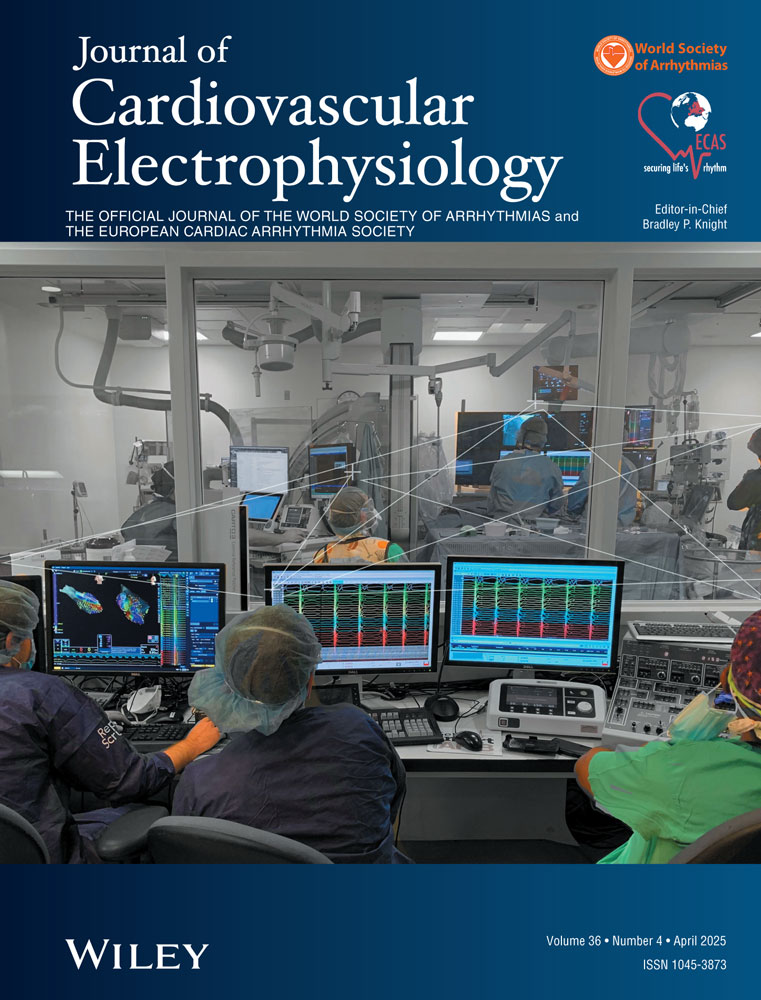Catheter Ablation for Atrial Fibrillation in Octogenarians—Outcome and Impact for Future Same Day Discharge Strategies
ABSTRACT
Background
Catheter ablation (CA) for atrial fibrillation (AF) in the elderly poses a growing challenge. Outcome data regarding CA in these patients are scarce.
Methods
Octogenarians with AF or consecutive atrial tachycardia undergoing index or re-ablation (pulmonary vein isolation [PVI] and ablation beyond PVI with different energy sources) in a single center, were analyzed. Study endpoints were efficacy as well as procedural safety. Secondary endpoints included periprocedural complications and predictors for prolonged hospital stay.
Results
In total, 301 patients (82.1 ± 1.9 years, paroxysmal AF n = 94 [31.2%], CHA2DS2-VASc-Score 4.2 ± 1.2) undergoing index ablation (n = 172/301, 57.1% [PVI only n = 156/172, radiofrequency n = 92, cryoballoon n = 59, pulsed-field ablation n = 5]) and re-ablation (n = 129/301 [42.9%]) were included. Arrhythmia-free survival at 1 year was 72.6%. Complication rates were low (groin site n = 2/301 [0.7%], tamponade n = 2/301 [0.7%] and stroke n = 1/301 [0.3%]). However concomitant infections (pneumonia n = 5/301 [1.7%], urinary-tract-infections n = 4/301, [1.3%]) and pacemaker-implantation n = 6/301 (2%) occurred more commonly. Hospital stay after CA was 2.3 ± 2 nights. Predictors for prolonged hospitalization were complications (odds ratio: 3.1), infections (odds ratio: 2.1), female sex (odds ratio: 1.15) and frailty assessed by Barthel index (odds ratio: 1.02).
Conclusions
CA for AF in octogenarians shows low procedural complications and reasonable efficacy. However, concomitant infections and pacemaker implantations occur in this cohort. Due to prolonged hospitalization after CA, especially in female and frail octogenarians, same-day discharge may not be suitable for this specific patient cohort.
Conflicts of Interest
Melanie A. Gunawardene received speaker's honoraria, educational grants, a fellowship, and consultation fees from Boston Scientific/Farapulse Inc., Medtronic, Biosense Webster, and Abbott. Stephan Willems received grants and personal fees from Boston Scientific, Farapulse Inc., Abbott, and Medtronic, as well as personal fees from Bristol Myers Squibb and Johnson & Johnson. Omar Anwar received speaker's honoraria and consultation fees from Biotronik, all outside the submitted work. The other authors declare no conflicts of interest.
Open Research
Data Availability Statement
The data that support the findings of this study are available on request from the corresponding author. The data are not publicly available due to privacy or ethical restrictions.




